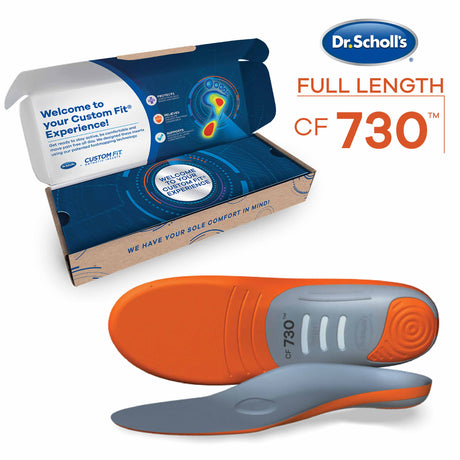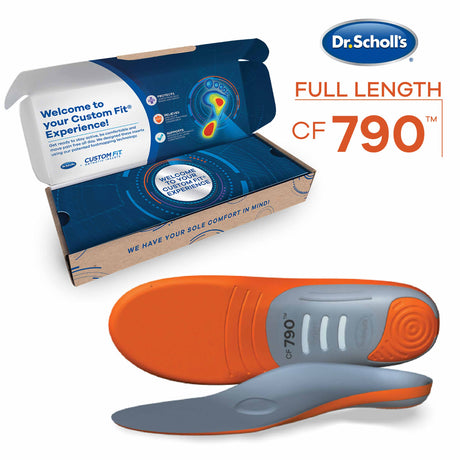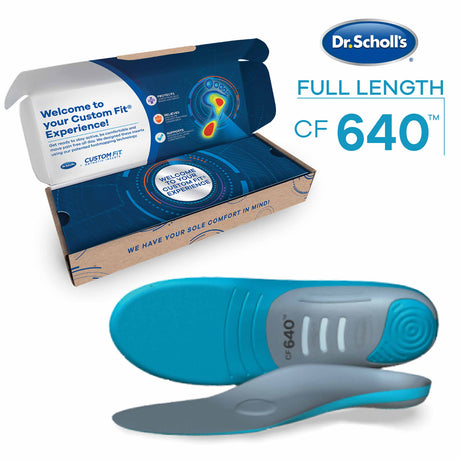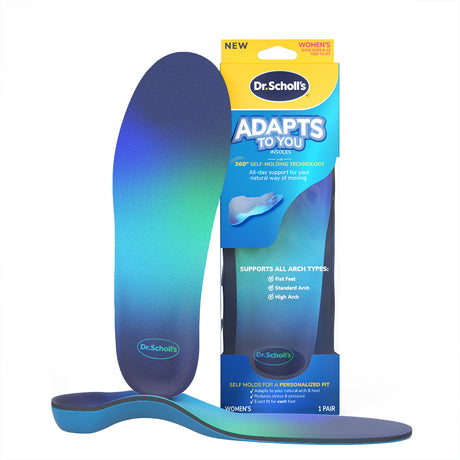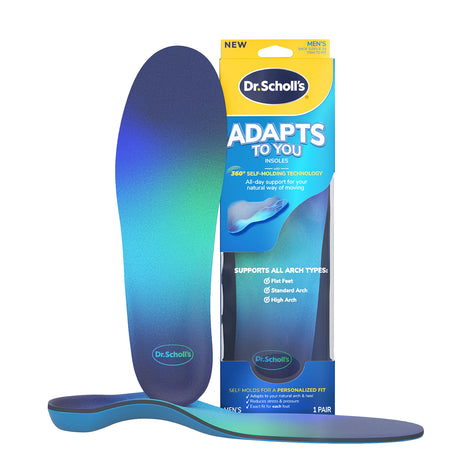Tired & Achy Feet FAQs
Economy shipping is FREE for orders over $25+!

There are several ways to soothe achy feet, including:
• Footbath — One of the best ways to ease achy feet is with a basic warm water soak. You can use a professional foot spa bath or you can simply fill a basin with warm water. Make sure the water isn’t too hot before you immerse your feet. To get even more out of your footbath, consider adding Epsom salts to the water. You can also add essential oils that are often used for relaxation, such as lavender and chamomile.
• Warm compress — Heat is a traditional method used for soothing tired, achy muscles. You can apply a warm compress directly to your feet. You may also choose to use an electric heating pad, a microwavable heat pack or a self-heating patch.
• Foot massage — An age-old technique for reducing stress, massage therapy can help soothe achy feet. Some massage clinics offer foot massages, and a full-body massage usually includes the feet. You can also enjoy a foot massage at home using a number of different foot massage tools available. Massaging your feet manually is another option.
• Foot spa treatment — Consider treating your feet to a spa pedicure or paraffin wax foot service. You can also pamper your feet at home with Dr. Scholl’s® Tired, Achy Feet Soothing & Reviving Foot Mask. The easy-to-use system consists of pre-treated booties that self-heat to relax sore muscles. Infused with essential oils, Epsom salts and hydrators, this unique foot mask leaves the feet feeling revived.
There are many causes of achy feet, including:
• Inappropriate or inadequate shoes — Footwear that doesn’t provide adequate support and cushioning can lead to achy feet. You may find that the shoes you’re wearing are comfortable for times when you’re not on your feet much. However, they may be inappropriate for days when you need to stand or walk to for long periods. Achy feet can also result from wearing high heels and pointy shoes with a narrow toe box that compress the front of the foot into a tight space.
• Excess weight — Being overweight can contribute to achy feet. The extra pounds put pressure on the feet and this can lead to achiness. Extra weight from pregnancy can also lead to achy feet.
• Aging — The natural aging process causes changes to the feet, including the breakdown of the heel fat pad as well as ligaments and tendons. These changes can lead to a variety of aches and pains.
• Medical conditions — Achy feet can be a symptom of certain health conditions, such as osteoarthritis.
• Foot injuries — Various injuries of the foot, such as plantar fasciitis, may result in a dull, aching sensation in the feet.
• Foot conditions — Some foot conditions, such as flat feet and high arches, can cause discomfort, including achiness.
If you’re unsure of what’s causing your aching feet and the pain is interfering with your daily activities, see your doctor. It’s important to determine the source of your discomfort so that appropriate steps can be taken to address the issue.
There are many solutions for achy feet. If achiness in your feet is severe and you’re not sure what the cause is, see your doctor. For minor foot aches, self-care therapies and over-the-counter treatments are often effective. These include:
• Insoles and orthotics — While high quality shoes can be very helpful for reducing achy feet, the right shoe inserts can offer additional relief. Dr. Scholl’s® Energizing Comfort with Massaging® Gel Insoles Massaging Gel® technology ensures comfortable support of the arch and heel. The insoles absorb shock to alleviate fatigue and soreness. If your foot aches are caused by demanding conditions on the job, try Dr. Scholl’s® Comfort & Energy Work Insoles. Layers of gel cushioning protect the feet against the effects of working long hours on hard surfaces. These adaptive, responsive insoles make it comfortable to stay on your feet all day.
• Pain relievers — Over-the-counter medications, such as aspirin, ibuprofen and naproxen can provide temporary relief from achy feet.
• Physical therapy — There are stretching and strengthening exercises that can help reduce foot soreness and fatigue. A physical therapist can work with you to develop a regular routine.
• RICE — A popular combination for addressing minor aches and pains, RICE stands for rest, ice, compression and elevation. All of these methods can be effective for easing discomfort in the feet.
There is no true cure for tired, achy feet. However, there are at-home solutions that can help reduce fatigue and discomfort in the feet. These solutions include painkillers, cold and hot therapy, insoles and orthotics, stretching and strengthening exercises, rest and elevation. See your doctor if you have persistent or serious foot pain that’s affecting your daily life. There are many potential causes of foot pain and in some cases, medical treatment may be necessary for long-term relief.
If you have sore, achy feet and you’re unsure of the cause, it’s best to see your doctor for an evaluation. Many factors can contribute to foot fatigue and discomfort, and it’s important to get a proper diagnosis so that you can be treated appropriately.
It’s very common for people to experience tired, achy feet at the end of a long day or following demanding physical activity, such as a strenuous high-impact workout. Your feet work much harder than you may realize, carrying you through a multitude of movements every day. One of the most important roles of your feet is absorbing shock to protect the rest of your lower body. This can lead to fatigue and discomfort. Fortunately, there are many ways to address tired, achy feet. If you have severe or persistent pain, see your doctor. Some cases of foot pain are due to a medical condition or injury, and these cases may require doctor-supervised treatment. For milder cases of tired, achy feet, there are many ways to address the problem at home, including:
• Rest — Feet often become tired and achy due to being overworked. If you have a demanding day that causes your feet to take a beating, try to take it easy the following day. Allowing your feet some rest between busy days can help reduce achiness and fatigue.
• Heat therapy — A simple solution, heat can help relax sore muscles and ease stiffness. Apply a heating pad or warm compress to your feet after an active day.
• Compression therapy — Achy legs and feet can often benefit from compression, a simple method using an elastic wrap or specialty socks. Compression therapy can help boost circulation, and ease soreness and swelling.
• Elevation — If your feet are achy and sore at the end of a long day, consider elevating them. Elevation is a simple technique that can help alleviate swelling and relieve tired, tender feet. It’s best to lie down and raise your feet and legs above your heart. Prop your feet on a pillow or a piece of furniture, such as an ottoman. Keep your feet and legs elevated for about 15 minutes. You can do this several times a day.
• Ice — If you have painful feet with swelling, cold therapy can help. You can either apply an ice pack directly to the feet or use a cold compress. You can leave the pack or compress in place up to 20 minutes at a time several times a day.
• OTC pain relievers — Minor aches and pains, including in the feet and legs, can often be addressed with over-the-counter pain relievers. NSAIDs (nonsteroidal anti-inflammatory drugs), such as aspirin, naproxen and ibuprofen, can also help with swelling.
• Massage — Achy feet can often benefit greatly from regular massage. If you can’t make it to the massage clinic, consider massaging your own feet using your hands or a specialized massaging tool designed specifically for feet. You might also consider Dr. Scholl’s® Massaging Gel® Advanced Insoles. These unique shoe inserts feature layers of massaging gel waves to relieve tired muscles in the legs and feet. You’ll feel more energized for hours.
• Foot and calf stretches and strengthening exercises — There are a number of stretching and strengthening exercises for both the feet and lower legs, which can help reduce fatigue and soreness. Consider working with a physical therapist for help developing an exercise program catered to your needs.
• Warm foot soak — If your feet are tired and sore after a hard workout or a long day on the job, consider a relaxing footbath. Warm water improves blood flow and helps ease sore muscles. You can add Epsom salts to the water for extra benefits.
• Foot mask — There are spa treatments that can help with tired, achy feet but not everyone has the time for such a luxury. For an indulgent spa-like experience at home, try Dr. Scholl’s® Tired, Achy Feet Soothing & Reviving Foot Mask. Each treatment contains self-heating, single use booties. The pre-treated booties are enriched with a blend of moisturizers, essential oils and Epsom salts. The formula relaxes tired muscles while hydrating rough, dry skin.
• Appropriate shoes — In order to reduce muscle fatigue in the legs and feet, make sure you’re wearing high quality footwear that’s appropriate for your chosen activity. For example, if you’re planning on going for a jog, choose athletic shoes designed specifically for running. This can help ensure you’re getting the ideal support and cushioning where you need it, so you’re less likely to suffer from foot fatigue and achiness.
• Insoles and orthotics — The right inserts can complement your shoes and help reduce leg and foot fatigue. Dr. Scholl’s® Revitalize Recovery Insoles incorporate the science of reflexology, massage, foam roller therapy and acupuncture to deliver an exceptional soreness-reducing shoe insert. When worn with your regular shoes, these insoles allow for faster recovery in order to ease tender muscles in the feet. Dr. Scholl’s® Float-On-Air® Comfort Insoles are another great option. These insoles bounce back after each step with super soft cushioning bubbles. Delivering all-day comfort, the insoles allow you to stay active longer.
If you’re still experiencing discomfort in your feet after trying self-care therapies and over-the-counter remedies, see your doctor. They can evaluate you, identify the source of your pain and make treatment recommendations.



